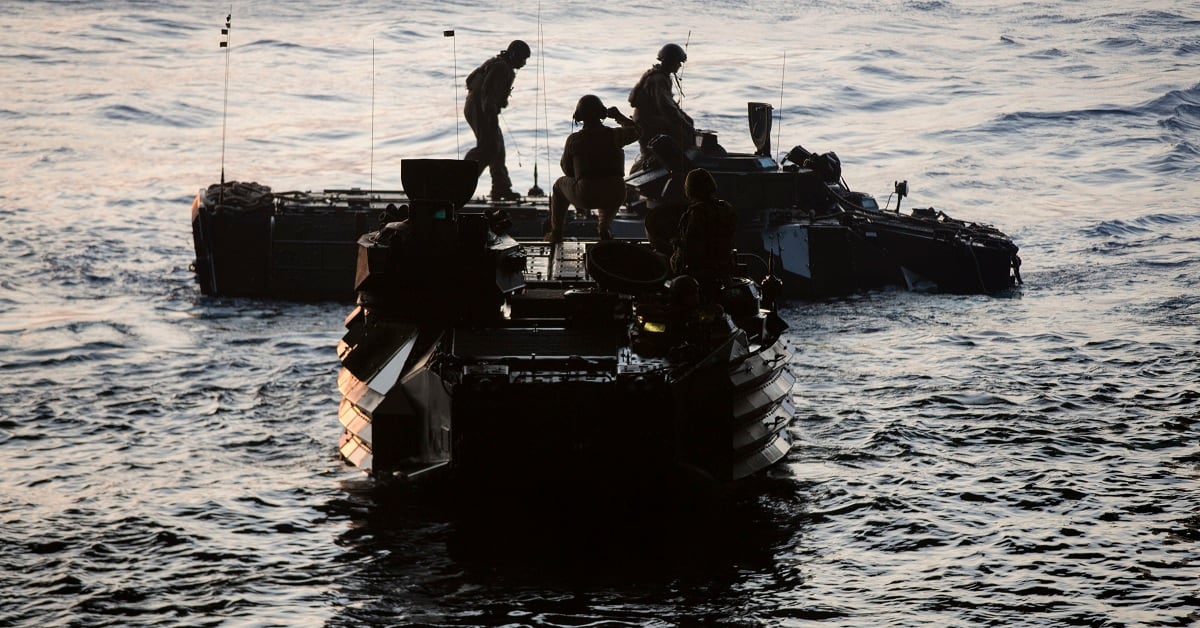The Marine Corps is looking to plus up the firepower aboard its new amphibious combat vehicle with a 30mm cannon.
Officials with Marine Corps Systems Command posted a request for information on the government website FedBizOpps on Monday. The ACV will replace the aging assault amphibious vehicle, which entered service in the early 1970s.
The Marines want three variants of the ACV ― a command and control configuration, a recovery and maintenance setup and ACVs with 30mm medium-caliber cannons.
The older AAV had space for a 40mm grenade launcher, but in direct vehicle-on-vehicle fighting the 30mm cannon offers fast, high-volume direct fire.
RELATED

BAE Systems was selected in 2018 to produce the ACV, which is expected to reach initial operational capability by fiscal year 2020. The company has built amphib vehicles for the military since 1941.
The ACV is a chief “connector” from ship to shore for Marine amphibious operations. it will include mine resistant ambush protected-level armor, and able to “negotiate two-foot significant wave height and four-foot plunging surf,” according to Program Executive Office-Land Systems.
The 30mm-cannon arming follows suit with making existing and future ground combat vehicles more lethal. The Army began upgunning its Stryker vehicles with a 30mm cannon, replacing its twin .50-caliber machine guns.
In 2018, the Army also put in place the common remotely operated weapon station for the Javelin missile on the Stryker, keeping soldiers inside the vehicle when firing the missile.
Those upgrades began first in Germany as a counter to increased capabilities in the Russian ground formations.
The Marines have also started upgrading their light armored vehicle, also a decades-old platform, to include a better powerpack, drive train and digitized instrument panels.
Late last year the Corps was still only looking at two ACV variants, according to official postings: the turreted assault vehicle and the command and control version.

At the annual Modern Day Marine Military Expo at Quantico, Virginia, John Swift, program director for BAE’s amphibious vehicles, told Marine Corps Times that they expect to have 30 vehicles built by the end of summer 2019 to go through testing and modifications as the Corps decides the composition of the ACV fleet. Those will be basic testing platforms.
This most recent posting gives some indications of what the Corps needs.
Most recently the Corps was asking for 704 ACVs when full production begins in 2022. Those are expected to be done within six years.
And a previously ongoing contract with another company to perform survivability upgrades on an estimated 392 AAVs was cancelled last year in a move of funding from that program to more rapid modernization priorities.
The legacy AAV is a tracked vehicle, while its replacement will be an eight-wheel vehicle.
Todd South has written about crime, courts, government and the military for multiple publications since 2004 and was named a 2014 Pulitzer finalist for a co-written project on witness intimidation. Todd is a Marine veteran of the Iraq War.





